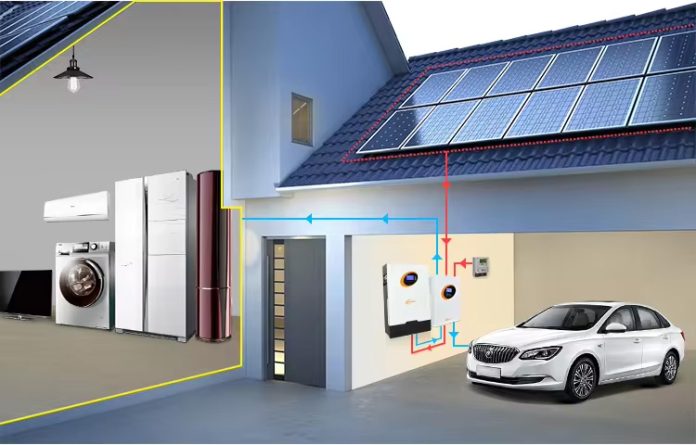Dear Readers, Net metering is a pivotal policy mechanism that incentivizes the adoption of renewable energy sources, such as solar and wind power, by allowing individuals and businesses to generate their electricity and receive credit for any excess energy they feed back into the grid. This article aims to provide a comprehensive overview of net metering, its benefits, challenges, and its role in promoting sustainable energy practices.
Net Energy Metering (NEM) provides a cheaper, greener and decentralized approach to add new energy generation to the grid. Onsite generation offers many technical advantages to the grid, such as fewer power losses due to shorter transmission distance and reduced peak generation requirement for the grid. The important aspect is onsite generation with battery storage which may provide flexibility against grid breakdowns. Additionally, the NEM facility does not require distribution companies to invest in a generation system as the building owner bears most solar PV installation costs.
Net Energy Metering (NEM)
Net metering is a billing arrangement between distribution companies and consumers who generate their electricity from renewable sources. When a renewable energy system, such as rooftop solar panels generates more electricity than is immediately consumed on-site, the excess energy is sent back to the grid. Through net metering, consumers receive credits on their electricity bills for the electricity they export, offsetting the cost of electricity drawn from the grid when renewable generation is insufficient.At present, regulations in Pakistan allow NEM connections on three-phase only. As of 2022, three-phase NEM has an installed capacity of approx.300 MW.
The current NEM policy of Pakistan does not demarcate regulations to install NEMs on single-phase connections directly using single-phase inverters. Single-phase electricity connections may also get a NEM facility if they first convert to NEM enabled three-phase connection. A typical single-phase connection has between 2-4 kW sanctioned load and Pakistan’s maximum allowed NEM capacity is one and a half times the sanctioned load. I most of the countries around the world allow single-phase NEM. The maximum capacity of single-phase NEM varies from as low as 3.6 kW to as high as 10 kW, but generally they allow up to 5 kW capacity.
Technical Challenges
NEM share many challenges, such as generation un-predictability, power quality, and voltage regulation. Onsite generation using NEM improves voltage regulation. Electricity connections far away from the substation experience voltage dips. This also results in power losses for the utility. However, onsite generation using solar PV solves both issues. Voltage improvement is directly proportional to the number of NEM connections. In general, power losses reduce with an increase in NEM installations, except for the low load time of the year, usually the later part of the year. The important challenge of net metering policies varies by influence and are subject to changes in regulations and utility practices, leading to uncertainty for consumers and investors in renewable energy projects.
Integrating high levels of distributed renewable generation into the grid presents technical challenges, including voltage regulation, grid stability, and coordination with existing infrastructure.Power quality is also one of the main issues challenges faced by NEM. High penetration of NEM can generate power quality issues in the distribution network, such as voltage regulation and harmonic distortion contribution.
The intermittent nature of solar energy may lead to rapid voltage fluctuations that can weaken the LV distribution feeder and, in some cases, may overheat the power lines. Stateoftheart inverters are available that can mitigate the issue of voltage fluctuation at consumer’s end and keep it between safe limits. However, if the inverter, malfunctions then the voltage fluctuation problem can move outside the specified values.
Financial Impact
Solar PV allows onsite generation, consequently, reduces dependence on the grid. With each onsite generated unit, whether consumed locally or exported back to the grid, the utility company may face a revenue loss or gain, depending on the solar capacity installed and the feed-in tariff model. However, this will also lower the country’s oil import bill as presently 60% of electricity generation in Pakistan is from thermal sources with a significant share of imported fossil fuels.
Solar PV is a reality, and DISCOs cannot fight or flight this upcoming tsunami. However, DISCOs may convert this perceived challenge to an opportunity with the right strategy, regulations, financial and business models and appropriate technical systems and know-how.
Despite challenges, net metering remains a critical tool for promoting renewable energy adoption and achieving energy transition goals. As technology advances, innovative solutions such as virtual net metering, time-of-use rates, and smart grid technologies will play a crucial role in optimizing the benefits of net metering while addressing its challenges.Net metering plays a vital role in unlocking the full potential of renewable energy resources and accelerating the transition to a sustainable energy future.
By addressing economic, environmental, and grid pliability objectives, net metering represents a win-win solution for consumers, DISCOs and society as a whole. As policymakers and stakeholders continue to refine net metering policies, it is essential to prioritize transparency, fairness and inclusivity to ensure the equitable distribution of benefits and the advancement of renewable energy adoption in Pakistan.
This exclusive article has been published in Automark Magazine – International, May-2024 printed edition from Pakistan.
